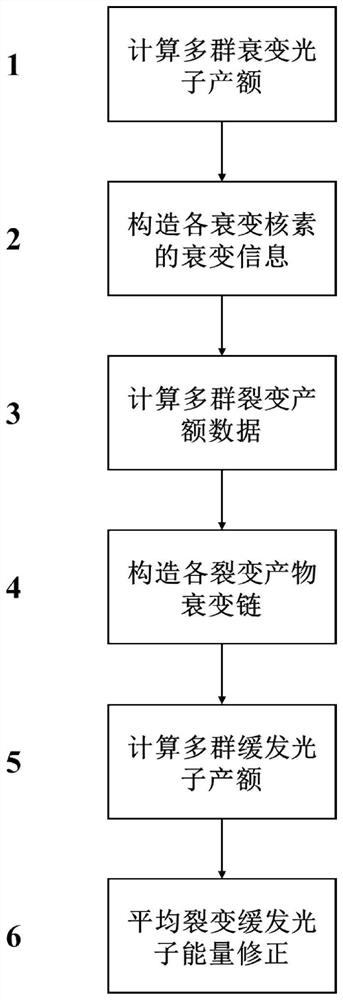Method for calculating yield of multi-group slow luminophores by using fission yield and decay data
A decay photon and fission yield technology, applied in the field of nuclear reactor heat release calculation and radiation shielding calculation, can solve the problems of inability to calculate slow photon data, unable to slow photon data processing, etc., to save a lot of time, high calculation accuracy, The effect of improving computational efficiency
- Summary
- Abstract
- Description
- Claims
- Application Information
AI Technical Summary
Problems solved by technology
Method used
Image
Examples
Embodiment Construction
[0055] The present invention will be further described in detail below with reference to the accompanying drawings and specific embodiments.
[0056] The present invention is a method for calculating the yield of multi-group delayed photons by using fission yield and decay data. During the long-term operation of the nuclear reactor, the generation and disappearance of fission products reach a balance, regardless of the half-life of fission product decay. The fission yield data given in the fission yield sub-library of the nuclear database and the decay photon energy spectrum data produced by the decay of each nuclide given in the decay sub-library are used to calculate the multi-group slow photon yield, such as figure 1 As shown, the present invention comprises the following steps:
[0057] Step 1: Calculate the multi-group decay photon yield: Calculate the multi-group decay photon yield for the decay photon energy spectrum given in the decay sub-library of the evaluation nucl...
PUM
 Login to View More
Login to View More Abstract
Description
Claims
Application Information
 Login to View More
Login to View More - R&D
- Intellectual Property
- Life Sciences
- Materials
- Tech Scout
- Unparalleled Data Quality
- Higher Quality Content
- 60% Fewer Hallucinations
Browse by: Latest US Patents, China's latest patents, Technical Efficacy Thesaurus, Application Domain, Technology Topic, Popular Technical Reports.
© 2025 PatSnap. All rights reserved.Legal|Privacy policy|Modern Slavery Act Transparency Statement|Sitemap|About US| Contact US: help@patsnap.com



